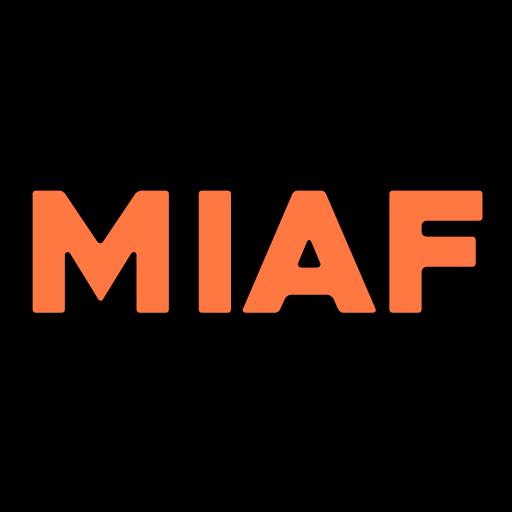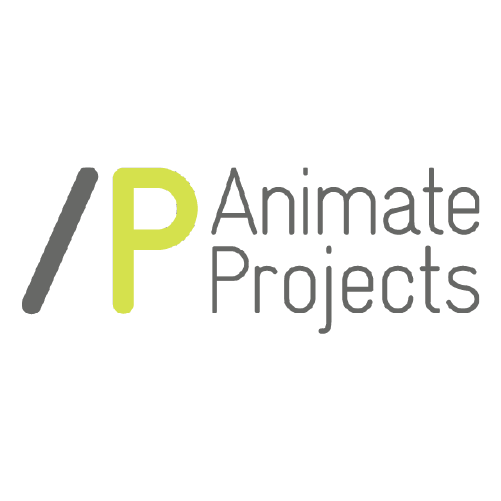
“Reality is for people who can’t cope with art.” It’s hard to be precise about who originally coined that phrase and in truth (truth, of course, being by definition a form of reality) it’s the kind of phrase that was probably organically hatched by multiple scribes and oracles. Artist, sculptor, provocateur Richard Tipping included it as signpost, artwork and (probably) agitation magnet for the “that’s-not-art” art at a large outdoor sculpture exhibition which included such spectacles as a shark erupting out of a giant banana skin and a massive monkey in quiet repose rending a set of gold plated testicles the size of car tyres for all to see. Selfie, anybody??
Of course, the obvious comeback is “art is for people who can’t cope with reality”. Oh hoh, so now it’s personal. Righto, step into my parlour.
We know not all animation is conceived of or created as art which says much about the incredible creative dexterity of animation as a technology. Animated ‘work’ is made and put out into the world for a variety of reasons and every ‘category’ has its goods, its bads and its uglies. The validity, strength and success of pretty much any work hangs substantially on the ‘intent’ of the creator[s] which can range from obtuse to purely transactional.
LIAF, of course, seeks to celebrate and showcase animation that primarily thinks of itself as art and that’s where concepts like ‘reality’ come into play. And, in turn, that’s where it can get really interesting because animation is a giant reality-bending toolkit, full of magical widgets that give an animator all the power they need to turn reality inside out before our very eyes and do something else with it. At its best this process helps us contemplate our own realities from angles most of us don’t have the flexibility to bend into. This is one part of the job description of any artist but the unique properties of animation give animation artists a helluva lot more firepower than dropping off a monkey with giant, golden nuts.
And many of those artists take that power very seriously.
Thinking through some of these issues is challenging enough but the ‘evolution’ of language we are experiencing at the moment makes it a more fluid and difficult task, especially if some sort of illumination is being sought. Arguably all languages are evolving all the time, right? You would struggle to get picked for that sweet sweet entry level customer service gig if all you had was Chaucerian English…. although????
But some words that have been safe through the ages are being ripped up, having virtually inverted meanings stuffed back into their shells and propelled back into the world to fight for their shaky new terrain in the contemporary vernacular. Mark Zuckerberg and his ghastly cabal of hench-people have eviscerated the word ‘friend’. Forever that word had meant something incredibly important and the meaning had changed little for centuries. Incredibly in the space of just a few years it was ambushed, sucked backwards through a narrow pipe, cut open and wrung out before being flung back into the world to represent something that was close to the opposite of what it had meant for millennia.
The Kahuna Maximus of word meaning destruction in this little pinpoint of history HAS to go to what’s being done to the word “reality” though. There’s always been a bit of wriggle room in defining and dealing with reality…. a bit!
In tackling how ‘real’ virtual worlds, virtual objects and out-and-out simulations are in his fascinating book “Reality+: Virtual Worlds and the Problems of Philosophy” philosopher and truth surfer extraordinaire David Chalmers makes the point that “your perception of being you is something that you know exists, but that’s also impossible for anyone else to experience, record or feel.”
Fair enough. Most of us can get beside that without too many cracks appearing in the armour we have wrapped around our understanding of reality. And although these philosophical trajectories can smear to a kind of intellectual paste as they progress through the machine of contemplation, ultimately most of us can also understand that there is a difference between a personal reality that cannot necessarily be shared or fully explained and a set of beliefs (no matter how profoundly held) that have not a shred of empirical evidence to support their actual existence. In other words, even if we believe something with every fibre of our being that doesn’t necessarily make it so.
But in the world we live in now ‘reality’ has not just had its meaning upended, it is rapidly becoming near worthless as a word worth keeping. Contesting facts is one thing but getting ourselves to a place where ‘reality’ is actually being jettisoned as even a concept we now no longer have any need for is another. Maybe it started with TV co-opting the word to create a marketable patina around something utterly manipulated. Like invisible radio transmissions these new messages eventually bounce off the walls and ceilings and contaminate much of what they touch. And if the stations pumping these signals out have enough power they soon overwhelm the airwaves.
Arguably there are two critical areas of human endeavour involved in the pushback (if not fightback). Journalism is critically important in holding the line that facts are facts and arguing over the nuances, misunderstandings or downright errors of whatever reality is being explained, maintained or refined is all part of the ongoing human experience of building the great reality that defines our lives and purposes. May that long occupy the left brain of humanity but it is artists who are better placed to tackle the way we understand, contest and express more emotionalised realities.
This puts – or leaves – artists in important, unusual and powerful/powerless positions. For starters, they never have the most powerful transmitters. But the legacy issue is that, as often as not, trying to reframe or reshape ‘reality’ has often been the stepping off point for artists to do what they do. So if we build a society in which more people take less notice of any messages because they either have no faith in the message (let alone the messenger) or simply because they’ve slowly bleached out the capacity to interpret anything beyond the truly/specifically literal or the narrowcasting of only what they already believe, will the work of artists simply fades into the white noise.
The good news is that that seems unlikely and there has always been a cohort of people who are simply compelled to think, to investigate and to proffer a compiled reality for us to consider as we manoeuvre through the highways and byways of life: it’s the instinct of the artist to perform this role. And often they are at their best when they are investigating not the physics of our built worlds but the emotionality of our lived [in] ones. And this programme is full of films that channel that instinct.

The programme’s opening film, It’s Just a Whole by German student animator Bianca Scali is a perfect example of navigating the science vs soul threads that govern much of our lives. We know a lot about skin cancer: we know how to look for it and we have built formidable weapons to combat it. Every single element of this endeavour has been researched, tested, replicated, taught and explained: it is both definitive and definable. The same cannot be said for the fear it induces when it arrives, despite that fear being as objectively real as anything that goes under a microscope. There is no equation out there that describes the chemical make-up of the electrical pulsing of fear. It can’t be brought up on an x-ray or reproduced in a test tube. But it’s as real as any door you walked through today or chemicals that hold together the paint on a bus. Meeting it, wrestling with it, overcoming it is a critical human enterprise. And also…… all people respond to situations in often very different ways. Scali’s film uses a deceptively simple design style to tease out what many of us might think of as an illogical reaction to a medical diagnosis. It makes you stop and think – in more ways than one.

Anything that can be said about the complexities of interrogating fear can equally be said about exploring the emotional terrain occupied by love. In that sense In Thousand Petals by Louise Bongartz is the perfect film to follow on. The narrative trajectory of the film is built on the potentiality for pain that sits like a bird of prey patiently hunched on the power pole of life. Bongartz manages the temperature of latent drama exquisitely and the film can speak for itself from there. But it is definitely worth pointing out the incredible way Bongartz and her design team have harnessed the aesthetic opportunities that the very grain of their work material – mostly hand crafted wood – offers. Presumably a mix of sweet luck and careful manipulation, the very textural nature of the material itself becomes an intensely felt aspect of the character’s emotional self and ‘lived’ experience. The sets, too, if you have a moment to peruse the details, would have taken some time to build!!
The often pungent, quietly ferocious beauty baked into Anna Benner’s film Chicken drives home the sense of what can play out when love tanks. The premise is simple, the story (at least its core) has a revolving repetitive dimension to it: one we all know plays out down so many streets and around so many corners. And it channels an all too animal instinctive response most of us could understand and that the film does a great job of making us feel.
The strongest impulse any creature possesses is the desire to survive. It’s the Plan A pretty much every living thing shares. The strategies for achieving this and the off-shoot emotional and social responses it provokes vary far more wildly. Somehow the ability to nurture oneself and the ones closest and most important to you has to be learned or deduced. The capacity to navigate the world in a way that offers the greatest sense of safety, the best chances to find the things we need and the greatest likelihood of carrying on the mission are likewise often a mysterious combination of learned behaviour and magical imprinting, but no less real for all the magic involved. Three Birds by Croatian animator Zarja Menart captures the often ethereal nature of this emotional blueprinting with a superb, delicate touch. Reaching into the animal world is the clever device Menart uses to help to expand our capacity to try and absorb that which is beyond the scope of human language whilst simultaneously reinforcing the never-ending fragility of the whole enterprise. It is no surprise that this film comes from our friends at Zagreb’s Bonobo Studio who have long prioritised seeking out and supporting filmmakers who do exactly this.
No surprise either that Bonobo sent us one of the more recognisably excoriating renditions of the tumbling circle of joyous frustration we all call ‘family life’. Zarko, You Will Spoil The Child by Veljko Popovic and Milivoj Popovic might present itself as the tale of one specific family but most of us have our own version of one of these creaky edifices. If they were a car, the brake lights would be on the blink and there would always be too much crap in the backseat. But we’d be hard pressed to come up with a trade-in value. There are a million moving parts to the jumbled puzzle that is a family – a wildly erratic ball rolling forward, limbs akimbo carving its own path by simply smashing through (or bouncing off) everything in its path.
Malcolm Turner
International Competition 2: Playing with Emotion screens at The Garden Cinema Sat 23 Nov and online from the same date (available for 48 hours)

















Leave a Reply